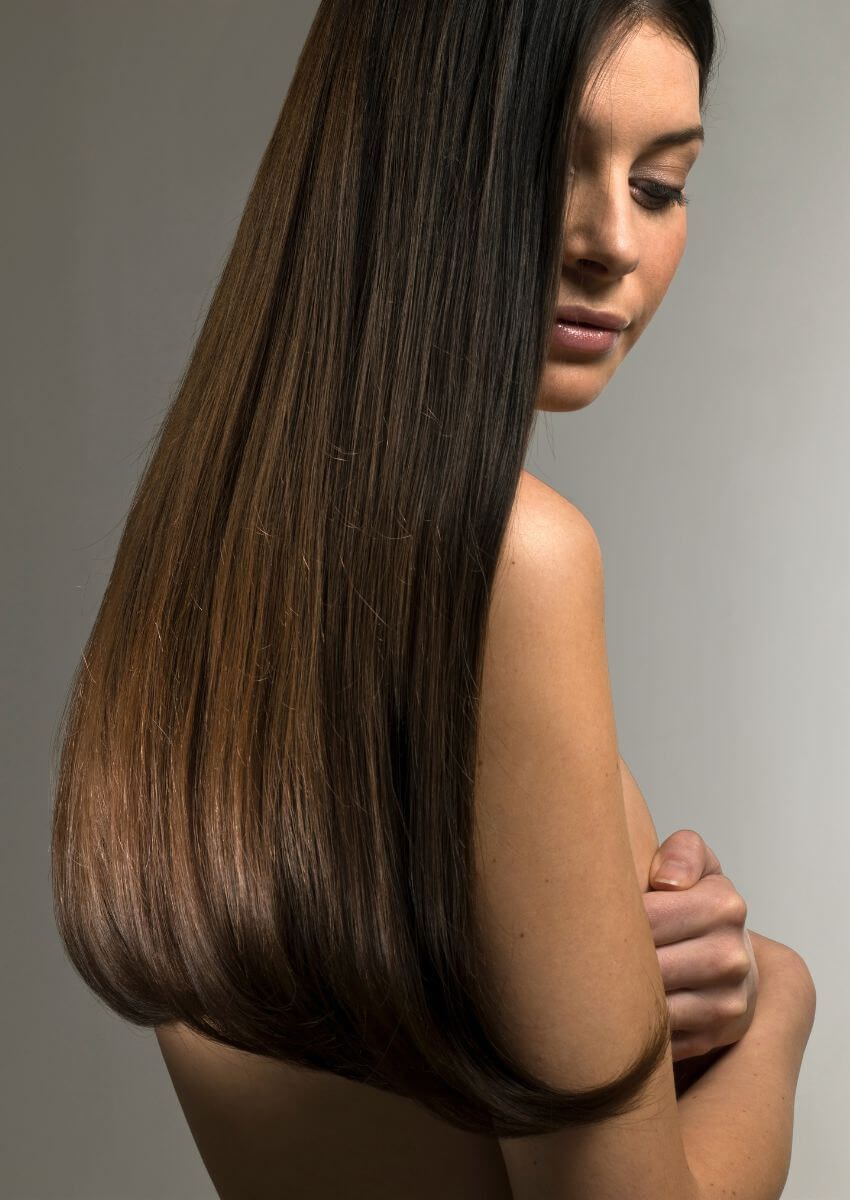How to Get Rid of Split Ends
Are you tired of dealing with split ends and damaged hair? Don’t worry, you’re not alone. Split ends are a common hair concern, but they can be managed and prevented with the right knowledge and care. This comprehensive guide on how to get rid of split ends will help you understand the causes and effects of split ends, explore effective treatments and prevention strategies, and introduce you to at-home hair treatments and the role of supplements in hair health.
What exactly are split ends? Split ends, scientifically known as "trichoptilosis," are the frayed tips of hair strands caused by stressors like heat styling, chemicals, and physical damage. They're the hair's cry for help, indicating a lack of nourishment and protection. Don't ignore them; treat them early to maintain luscious, healthy locks!
Key Takeaways
- Split ends are caused by various factors, but can be treated with proper knowledge and care.
- Effective methods to treat split ends include regular trims, nourishing hair masks, natural oils or leave-in conditioners.
- Prevention strategies such as a proper hair care routine and the use of suitable products help reduce the risk of split ends.
Understanding Split Ends: Causes & Effects

Split ends occur when hair strands split into two, indicating damaged, dry, and unhealthy hair. This hair damage can be attributed to various causes, such as:
- Heat styling
- Chemical treatments
- Poor quality products
- Infrequent trims
Heat styling tools like blow dryers, flat irons, and curling irons can weaken hair fibers, while chemical treatments like hair dyes, perms, and keratin treatments can strip away natural oils, leading to split ends. One way to minimize damage is to use hair air drying techniques instead of heat styling tools, especially when dealing with wet hair.
The consequences of split ends go beyond aesthetics. They can make your hair more prone to breakage and make it harder to maintain a healthy, smooth appearance. Fortunately, there are plenty of ways to fix split ends and prevent further damage – with the right knowledge and care, you can achieve the healthy hair you’ve always desired.
Effective Methods to Treat Split Ends
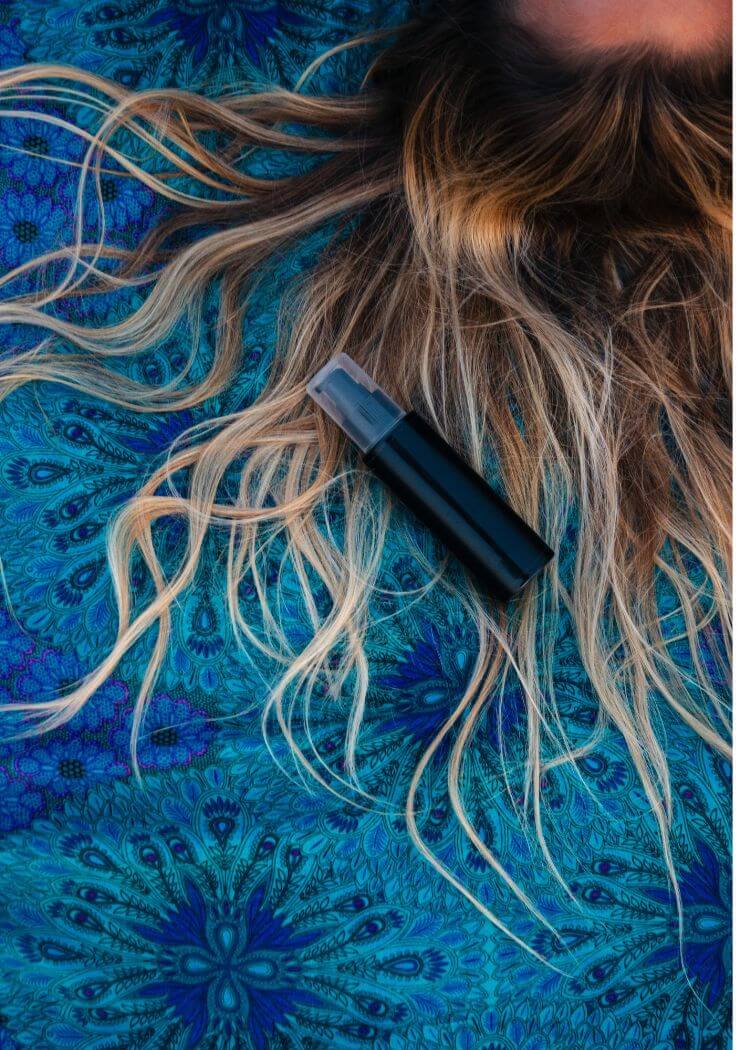
Adopting a comprehensive approach is key when treating split ends. This includes hair trimming techniques, nourishing hair masks, and the use of natural oils or leave-in conditioners to hydrate and smooth the hair cuticle.
Exploring these effective methods further will help your hair shaft look and feel its best.
Hair Trimming Techniques
One of the most effective ways to manage split ends is by regular trims. There are various hair trimming techniques, such as:
- Blunt cutting
- Hair dusting
- Point cutting
- Reverse point cutting
- Soft notching
- Weight reduction
Each technique has its benefits, but the key is to trim hair approximately 0.25 inches (0.64 cm) above the split to prevent further damage.
If you’re concerned about preserving your hair length while trimming split ends, consider having your hair cut into layers. Request your hairdresser for a trim of the top layer which has been damaged. Keep the lower layers and length intact. This approach allows you to maintain your desired length and minimize the appearance of split ends.
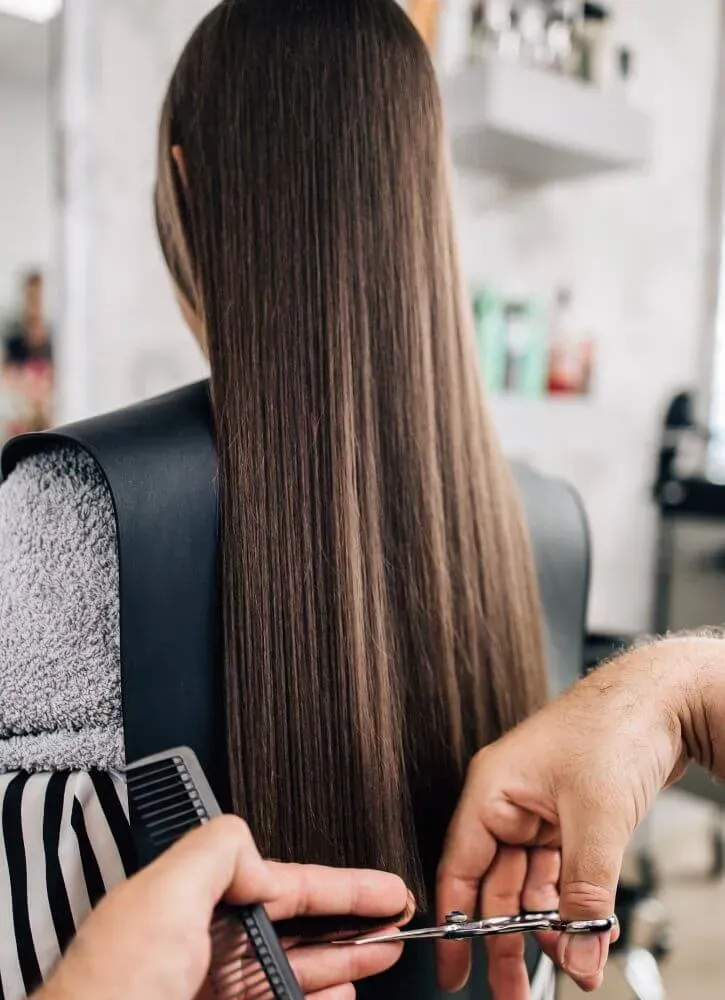
Nourishing Hair Masks
Hair masks are a fantastic way to provide hydration, restore hair luster, and nourish the follicles, ultimately repairing damaged hair and split ends. There are various types of nourishing hair masks available, such as coconut oil masks, which can help get rid of split ends by fortifying and hydrating hair, diminishing protein loss, and rendering hair smoother and softer.
Another effective hair mask is the DIY avocado protein mask, which is a nutrient-dense hair treatment that provides strands with all the necessary components to maintain their health. This nutritious blend is made with one avocado, one egg and just a few drops of olive oil. It is simple to make and full of healthy goodness! Apply the mask to your hair, leave it in for 20 to 30 minutes, and then rinse it out to reveal healthier, more nourished hair.
Natural Oils and Leave-In Conditioners
Natural oils like sweet almond oil and argan oil are known to be beneficial in treating split ends and preventing hair breakage. To use these oils, focus on the hair ends when applying vegetable oils such as coconut, olive, and almond oils to towel-dried hair.
Leave-in conditioners are another effective method to address split ends, as they hydrate and revitalize dry and damaged hair. By using a leave-in conditioner, you can prevent further hair damage and split ends, ensuring your hair remains smooth, healthy, and strong.
Prevention Strategies for Split Ends
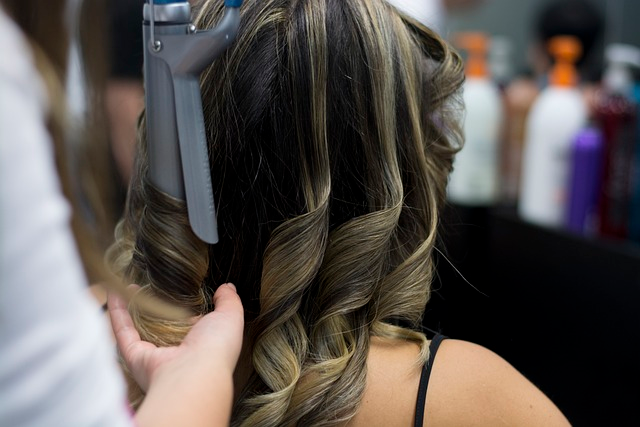
Preventing split ends is all about establishing a proper hair care routine, taking precautions when using heat styling tools, and selecting the right hair products for your hair type. Consulting with a hair stylist can also provide personalized advice for your specific needs.
Incorporating these strategies into your daily routine can aid in effectively preventing split ends, helping you maintain healthy and beautiful hair.
Proper Hair Care Routine
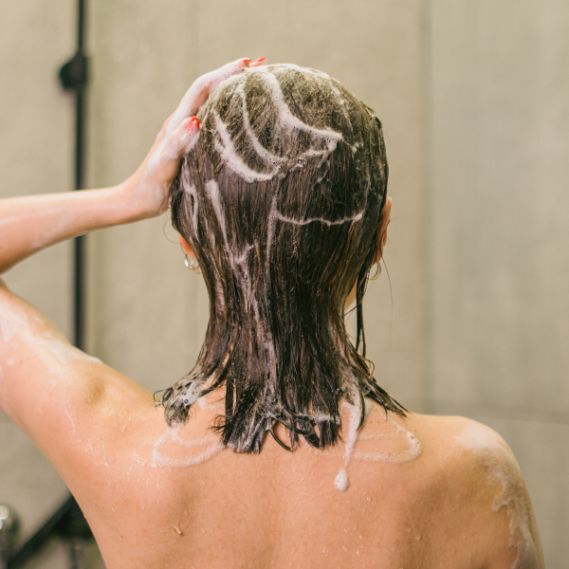
An appropriate hair care routine encompasses the following steps:
- Cleansing with shampoo
- Conditioning
- Untangling
- Safeguarding from heat damage
- Prepping
- Drying with a microfiber towel
- Employing suitable products for one’s hair type.
Start by cleansing your hair with a mild shampoo that matches your hair type. Then, nourish and protect your strands with a conditioner that’s also suitable for your hair.
To detangle your hair, follow these steps:
- Use a wide-toothed comb or a detangling brush to minimize hair breakage.
- Apply a heat protectant spray before using any heat styling tools to safeguard your hair from heat damage.
- After washing your hair, gently dry it with a microfiber towel or a t-shirt to prevent frizz and breakage.
- Use hair products that are free of harsh chemicals and specifically designed for your hair type to maintain overall hair health.
Heat Styling Precautions
Heat styling can be damaging to hair and lead to split ends if not done with care. To reduce the risk of split ends, always use a heat protectant before blow drying, curling, or straightening your hair. Choose a medium heat setting when blow drying to minimize hair damage and prevent split ends.
Allowing your hair to air-dry whenever possible can also help in preventing split ends. By reducing the frequency of heat styling and following the precautions mentioned above, you can maintain the health of your hair and keep split ends at bay.
Choosing the Right Hair Products

Selecting the right hair products for your hair type is crucial in preventing split ends and maintaining overall hair health. Look for products that are specifically tailored to your hair type and free of harsh chemicals, such as sulfates and parabens, which can be detrimental to your hair.
When choosing hair products, consider ingredients like natural oils, proteins, and vitamins that can nourish and protect your hair. By using hair products that cater to your hair type and avoiding harsh chemicals, you can effectively prevent split ends and keep your hair healthy and strong.
Diet and Nutrition for Healthy Hair

Maintaining a balanced diet plays a crucial role in preventing split ends and promoting overall hair health. Consuming a diet rich in:
- fruits
- vegetables
- proteins
- healthy fats
can provide your hair with the necessary nutrients to stay strong, smooth, and shiny. Protein, in particular, is vital for hair health, as hair is comprised of 95% keratin (protein). Supplementing hair strands with the appropriate amino acids through protein-rich foods is crucial for maintaining their strength, smoothness, and shine.
Some protein-rich foods that can enhance hair health include:
- Mackerel
- Salmon
- Tuna
- Sardine
- Eggs
- Chicken breast
- Ground beef and turkey
- Beans
- Tofu
- Lentils
- Nuts
- Seeds
Incorporating these protein-rich foods into your diet can bolster hair health and keep split ends at bay.
Weather and Environmental Factors
Weather and environmental factors, such as sun exposure and low humidity, can cause hair dryness and lead to split ends. Extended sun exposure can result in hair dryness, which in turn, can cause split ends. Additionally, a lack of humidity can make hair more fragile and prone to breakage, resulting in split ends.
Use suitable products and accessories such as hats and scarves to safeguard your hair from the sun and retain its moisture, thus protecting it from these environmental factors. By taking these precautions, you can minimize the impact of weather and environmental factors on your hair and prevent split ends.
Alternative Solutions to Conceal Split Ends

In addition to treating and preventing split ends, there are alternative solutions to conceal them. Some options include:
- Hair extensions
- Updos
- Buns
- Accessories like barrettes, hats, and scarves
These can help hide split ends and give your hair a polished appearance.
Another method to conceal split ends is the “hair tuck” technique, where you tuck the lower portion of your hair into the neckline of your shirt or jacket. However, those with textured hair should exercise caution with this method, as it may lead to breakage. These alternative solutions offer a temporary hideaway for split ends, allowing you to maintain a well-groomed appearance.
At-Home Hair Treatments
At-home hair treatments can be an effective and affordable way to nourish and moisturize hair, reducing the appearance of split ends. Coconut oil, avocado protein masks, and honey and olive oil mixtures are examples of DIY treatments that can help repair damaged hair and prevent split ends.
To use honey and olive oil, follow these steps:
- Mix three tablespoons of olive oil with two tablespoons of raw honey.
- Apply the mixture to shampooed hair.
- Leave it in for 20 to 30 minutes.
- Rinse it out and wash your hair with a clarifying shampoo.
These DIY treatments offer your hair the necessary nourishment to remain healthy and strong.
The Role of Supplements in Hair Health
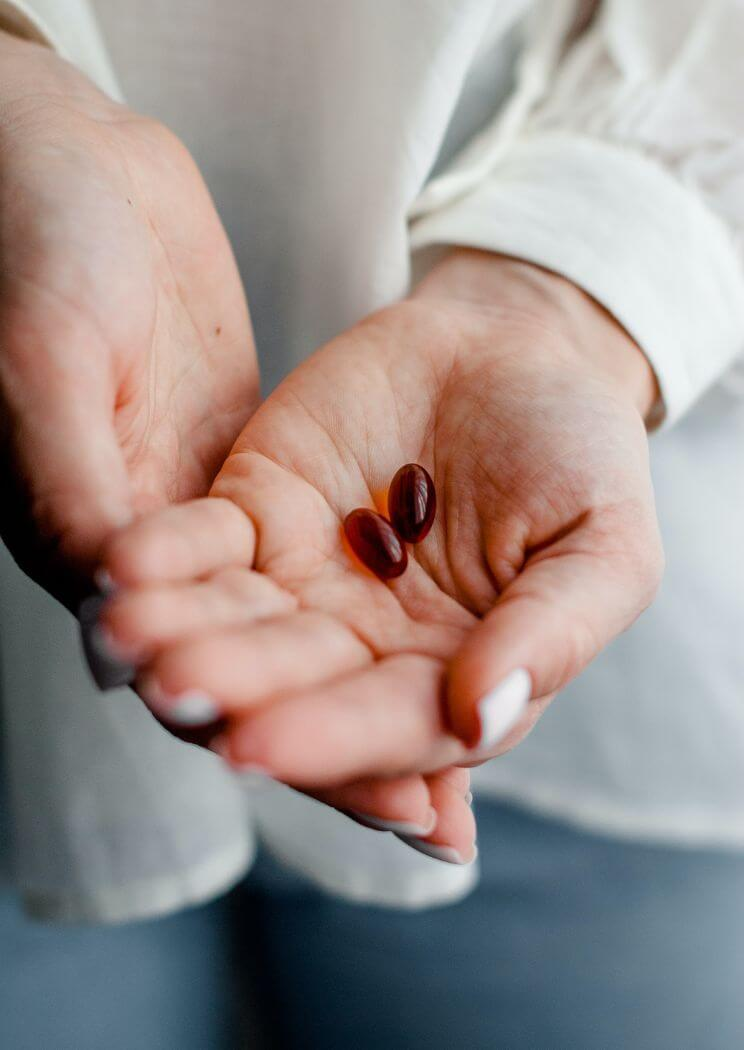
Dietary supplements like collagen, biotin, iron, and folic acid can strengthen hair, manage hair loss, and contribute to overall hair health, helping to prevent split ends. These supplements provide essential nutrients to support hair growth and prevent breakage.
Before considering supplements for hair health, make sure to consult with a medical professional or nutritionist to determine the dosage that best suits your needs. Adding supplements to your daily routine can enhance hair health and reduce the frequency of split ends.
Summary
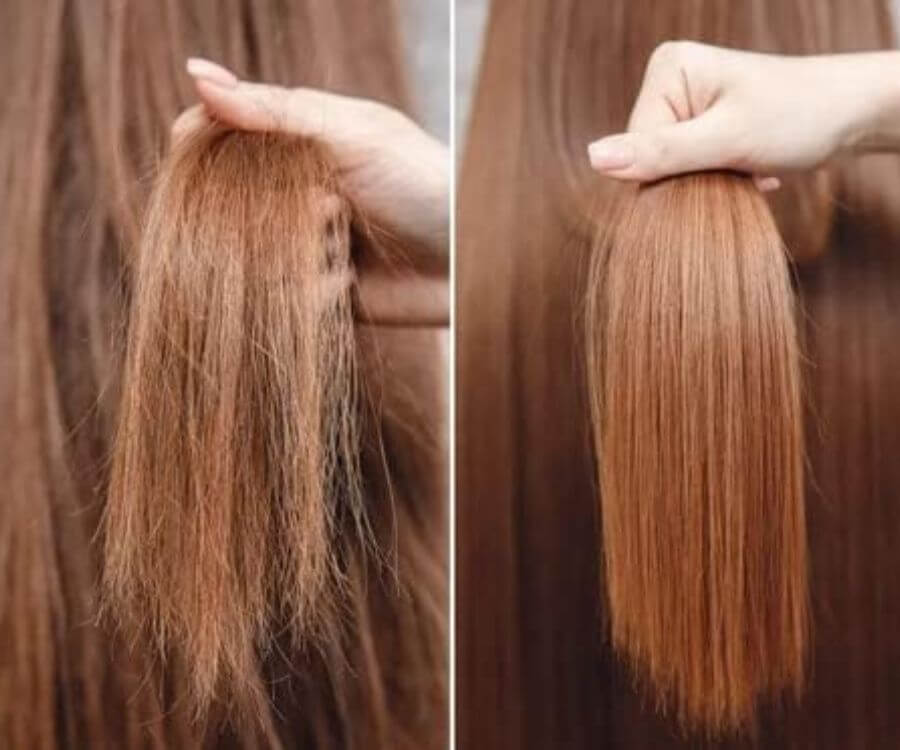
In conclusion, split ends are a common hair concern that can be managed and prevented with the right knowledge and care. By understanding the causes and effects of split ends, adopting effective treatments, establishing a proper hair care routine, and paying attention to diet and nutrition, you can achieve the healthy, beautiful hair you’ve always desired. Remember, maintaining healthy hair is an ongoing process, but with consistent effort and care, you can keep split ends at bay and enjoy strong, lustrous locks.
Frequently Asked Questions
Is it possible to repair split ends?
Although you can't fully repair split ends, they can be temporarily mended with the help of split end menders, leave-ins, conditioners and treatment masks. The only real solution is to trim them off.
What is the main cause of split ends?
Split ends are caused when the hair's protective layer, the cuticle, is worn or damaged by external aggressors like heat styling, chemical products, and physical damage. These wear away the hair proteins and leave the ends of our hair dry, brittle, and frayed.
What are split ends?
Split ends occur when the ends of your hair become dry, brittle and frayed due to exposure to extreme weather, styling techniques and chemical hair products. They can be recognized by their similar appearance to an unraveled rope.
How can I prevent split ends?
To prevent split ends, create a proper hair care routine, use heat styling tools responsibly and select the right hair products for your hair type.
What at-home hair treatments can help reduce split ends?
Nourishing your hair with treatments like coconut oil, avocado protein masks, and honey and olive oil mixtures can help reduce the appearance of split ends.
Thanks for Reading-
Related Reads:

